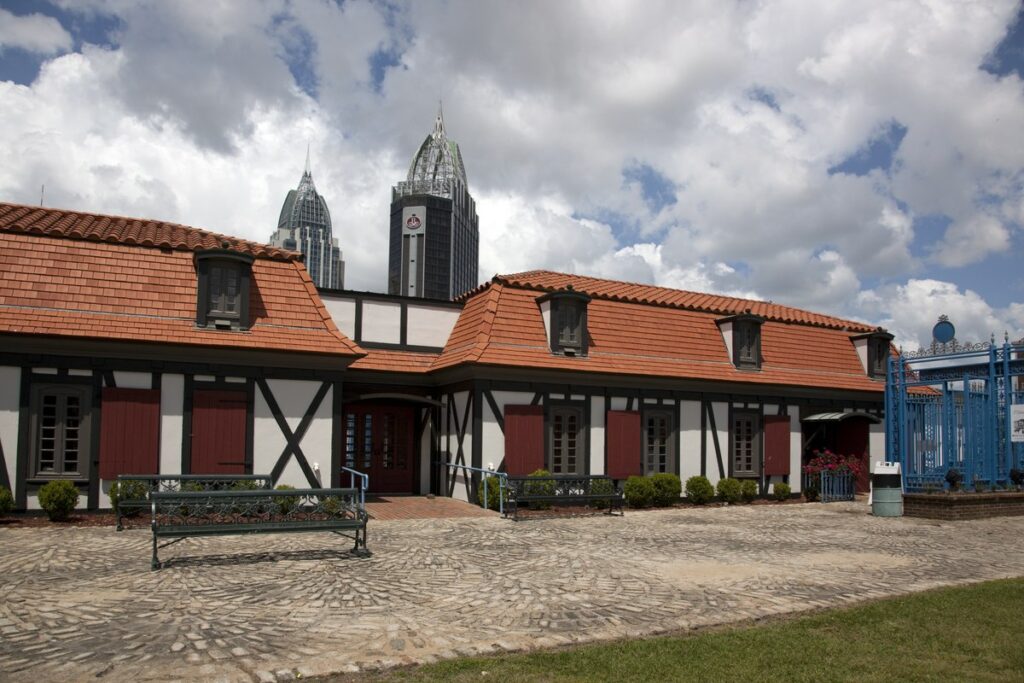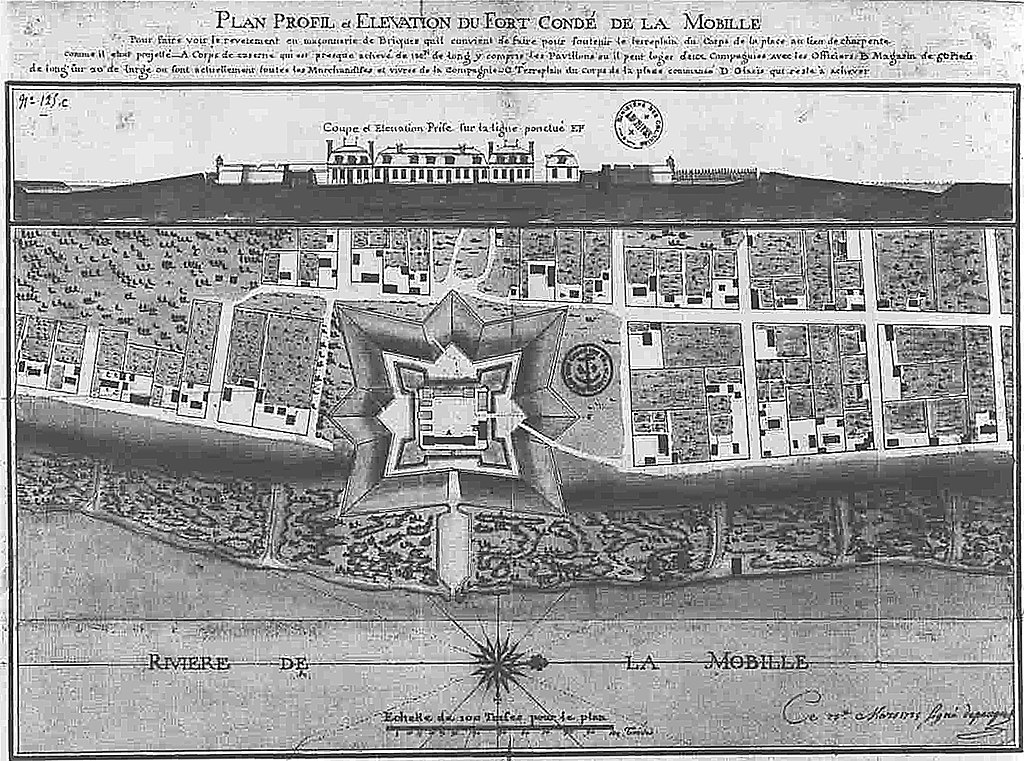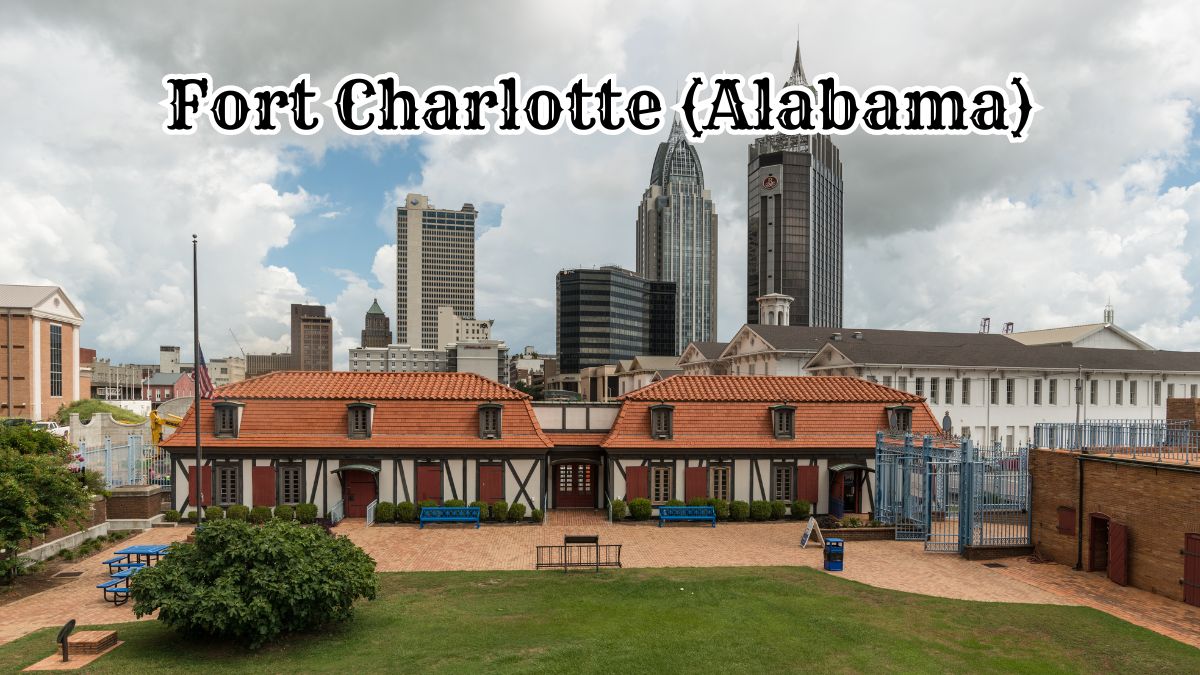Located in the heart of Mobile, Alabama, Fort Charlotte is a must-visit historical landmark that offers a captivating journey into the past.
Built initially as Fort Louis de la Mobile by French explorers in 1702, this fortification witnessed numerous significant events, including its renaming Fort Charlotte under Spanish rule.
Visitors can explore meticulously preserved structures, interactive exhibits, and guided tours that bring the fort’s storied history to life.
As a key site of military engagements and strategic importance, Fort Charlotte stands alongside the original Fort Condé and the old fort as a testament to Mobile’s rich colonial heritage.
Overview of Fort Charlotte (Alabama)

Fort Charlotte is located in Alabama, United States. It is a fortification built during the colonial era with significant historical value.
The fort has been meticulously preserved and restored, offering visitors a glimpse into its storied past.
Historical interpreters play a vital role in bringing the history of Fort Charlotte to life. Dressed in period-accurate uniforms, they provide insights into the daily life and military operations of the time.
The fort also serves as the official welcome center for those exploring the area, making it a key starting point for tourists wanting to learn about local history.
Visitors will find various displays and exhibits highlighting the fort’s strategic importance. These exhibits include artifacts, maps, and documents from its active military days.
Fort Charlotte offers guided tours that enhance the educational experience. These tours delve into the architecture, original layout, and significant historical events associated with the fort.
The site is for history enthusiasts, families, and school groups.
Educational programs are available to make history engaging and accessible to younger audiences.
Restoration efforts ensure that Fort Charlotte remains an important cultural and historical landmark. These efforts are evident in the carefully maintained structures and artifacts.
Fort Charlotte’s charm lies in its ability to transport visitors back in time. Its well-preserved state provides a tangible connection to the early days of Alabama’s history.
Fort Charlotte Through Time

Fort Charlotte has played a significant role in various historical periods. Its importance spans its strategic military use during wars to ongoing preservation efforts protecting its legacy.
Colonial Era
Initially constructed by French explorers as Fort Louis de la Mobile in 1702, the site served as a critical defensive structure for the French colonial presence in the region.
Spanish rule later led to the fort being renamed Fort Charlotte after King Charles III of Spain.
During this era, the fort changed hands multiple times, indicating the area’s value to various colonial powers.
This back-and-forth highlights the fort’s importance in the broader context of colonial times and its role in the power dynamics of North America.
Military Engagements
Fort Charlotte witnessed several significant military engagements.
During the American Revolution, the fort was captured by Spanish forces under Bernardo de Galvez in 1780. This occurred during the battle of Fort Charlotte, which played a part in the Anglo-Spanish War.
This event was crucial as it demonstrated Spain’s support for the American cause against British rule.
Additionally, the fort saw action during various periods, including the Indian War and the Spanish attack, making it a focal point in regional conflicts and showing its strategic value.
Preservation Efforts
Fort Charlotte is a notable historic site, with parts of the original structure still visible.
The fort is included on the National Register of Historic Places, highlighting its historical importance.
Local organizations and the History Museum of Mobile have spearheaded preservation efforts to maintain and restore its remnants.
These efforts ensure the fort’s legacy endures, providing educational opportunities and preserving a vital piece of Alabama’s history. The fort’s current location continues to attract visitors interested in its storied past.
Cultural Impact
Fort Charlotte plays a significant role in preserving Mobile, Alabama’s rich history and diverse culture. Its influence extends through local traditions, historical connections, and educational initiatives.
Mardi Gras Celebrations

Fort Charlotte is central to the city’s famous Mardi Gras celebrations. Mobile’s Mardi Gras, the oldest-known carnival in the United States, began in 1703, predating New Orleans.
The fort often hosts various special events during this period, highlighting the cultural traditions of the Gulf Coast.
The nearby Mardi Gras Park features monuments and exhibits that honor the event’s origins.
Mobile’s Colonial Past
Fort Charlotte is a key site for exploring Mobile’s colonial history. Built in the 18th century, it has served various roles under French, English, and Spanish control.
Visitors can see interactive exhibits detailing colonial life, local craftsmen demonstrating traditional arts, and models showing aspects of daily life in the past.
The fort also partners with downtown Mobile to host historical reenactments and tours.
Educational Programs
The fort offers various educational programs to provide classes on Mobile’s rich history.
These programs cater to students and history enthusiasts, focusing on colonial military strategy and colonial arts.
The interactive exhibits make learning engaging and accessible, ensuring that Mobile Bay’s cultural heritage remains preserved for future generations.
Architecture and Reconstruction

Fort Charlotte’s architecture and reconstruction efforts highlight an intricate blend of historical authenticity and careful modern craftsmanship.
Originally built in the early 18th century, the fort has seen several phases of reconstruction that tell a story of resilience and meticulous preservation.
Fort Conde Replica
The Fort Conde Replica, situated in the heart of Mobile, Alabama, is a scaled-down version of the original fort.
Built as a four-fifths scale model, this replica gives visitors a tangible glimpse into colonial military architecture.
The replica, constructed using cedar wood and designed to reflect the original fort’s layout, serves educational and cultural purposes.
The aim is to offer a closer look at early colonial defenses while preserving the essence of the Fort of Colonial Mobile.
Original Fort Structures
The original fort structures of Fort Charlotte included everything from simple temporary wooden stockade fort constructs to more permanent designs with a stone foundation.
These original buildings exemplify a range of construction techniques that evolved as the fort expanded.
The structures reflect the era’s defensive needs and the builders’ resourcefulness in using local materials.
Despite the challenges of time and weather, remnants of these original structures have been preserved and studied, offering insights into 18th-century colonial life.
Construction Techniques
The construction techniques employed in Fort Charlotte’s initial build and subsequent reconstructions showcase an understanding of military engineering and local environmental conditions.
In early phases, cedar wood was used for its durability and resistance to rot, while later reconstructions utilized brick for its sturdiness.
The transition from a temporary wooden stockade fort to a new brick fort illustrates adaptations to increasing threats and changing military tactics.
Historical documents and archaeological findings have also guided modern reconstruction efforts to ensure accuracy in recreating these techniques.
Explore More: Army Forts in Alabama
Visitation Information
Fort Charlotte uniquely blends historical significance and engaging exhibits. Visitors can explore its accessible location and various tours that highlight its rich past.
Accessibility and Location
Fort Charlotte is situated in Downtown Mobile, making it ideal for visitors exploring the area.
It’s easy to reach by car or public transport, with key roads like Church Street, South Royal Street, and Theatre Street providing straightforward access. Parking is available nearby.
The fort is committed to historic preservation and caters to all visitors, including those with disabilities.
Ramps and other accessibility features ensure everyone can enjoy the site.
Tours and Exhibits
Fort Charlotte boasts a range of tours, including guided and self-guided options.
These tours offer insights into the fort’s role in American history with knowledgeable guides.
Interactive exhibits enhance the experience, providing hands-on learning opportunities.
Special note: delivery of educational content is engaging, making it an excellent choice for school groups and families.
Exhibits, including artifacts and multimedia displays, cover various themes, from military history to daily life at the fort.
Explore More: 19 Historic Forts in Alabama
Fort in Contemporary Context
Today, Fort Charlotte is a historic symbol and a venue for various modern events and activities. It interacts directly with urban development and is integral to the community.
Urban Development
The construction of the Wallace Tunnel, connecting Mobile to New Orleans, significantly impacted Fort Charlotte and its surroundings.
The development brought new infrastructure, reshaping the area while preserving the fort’s historic integrity.
The tunnel’s proximity to the fort has enhanced accessibility, making it a popular destination for locals and tourists.
In recent years, urban development around the fort has included parks and mixed-use buildings.
Enhanced amenities have turned the nearby area into a lively urban space. Various businesses, restaurants, and recreational areas have sprung up, creating a vibrant environment that complements the historical site.
Special Events and Uses
Fort Charlotte hosts a variety of special events that bring the community together. One significant occasion is the biannual celebration, which emphasizes regional culture and history.
The fort’s spacious grounds are ideal for public gatherings, historical reenactments, and cultural festivals.
In addition to community events, the fort also serves as an educational resource. Schools frequently organize field trips, which provide students with hands-on learning experiences about local history.
Private events such as weddings and corporate functions are common, leveraging the fort’s unique setting for memorable occasions.
Fort Charlotte maintains its relevance by blending historical significance with contemporary uses and continues to be an essential part of the community’s cultural and social fabric.

Cory is a website owner and content creator who enjoys fishing, history, coin collecting, and sports, among other hobbies. He is a husband and father of four.
Romans 15:4 For whatever was written in former days was written for our instruction, that through endurance and through the encouragement of the Scriptures we might have hope.

